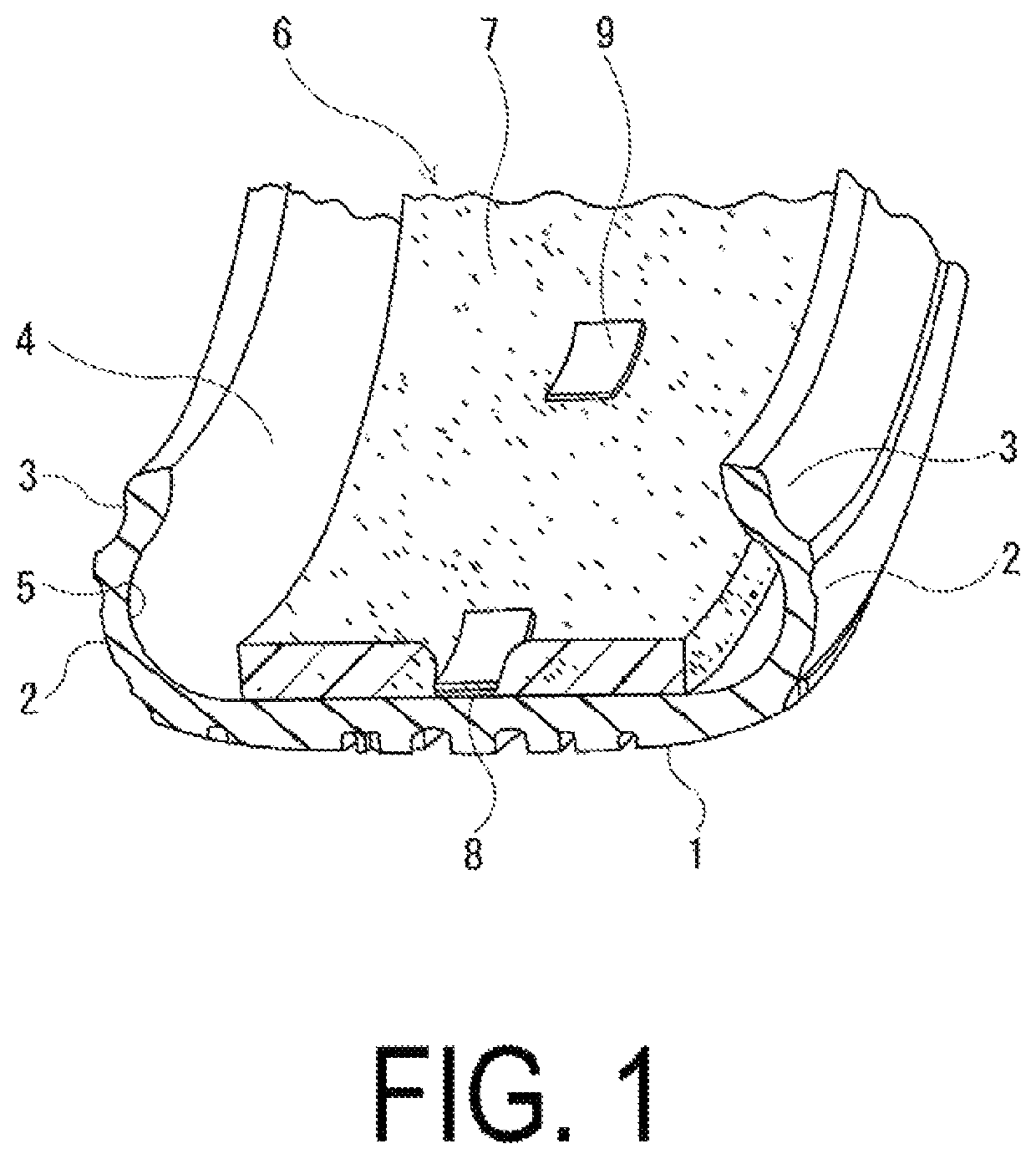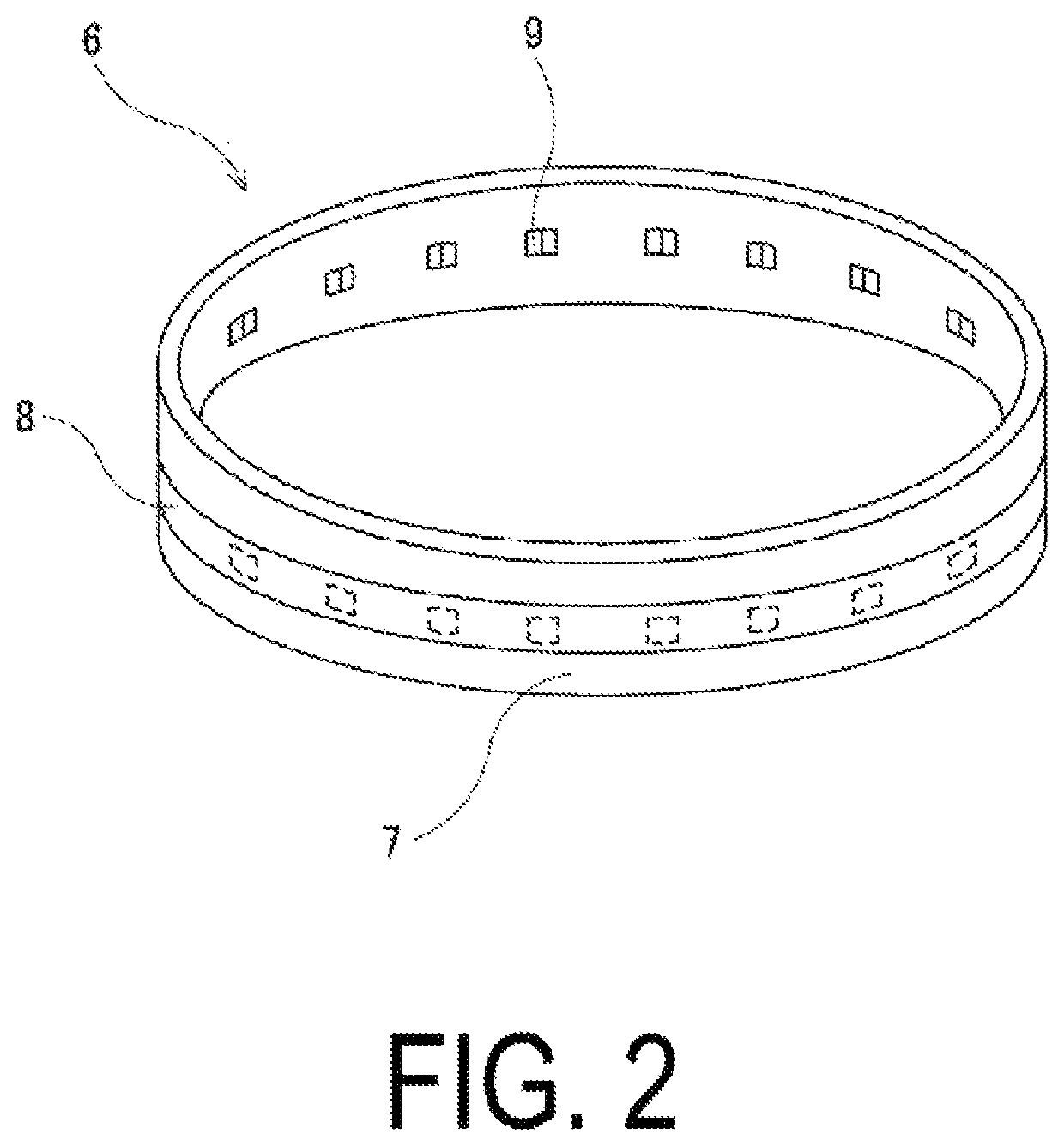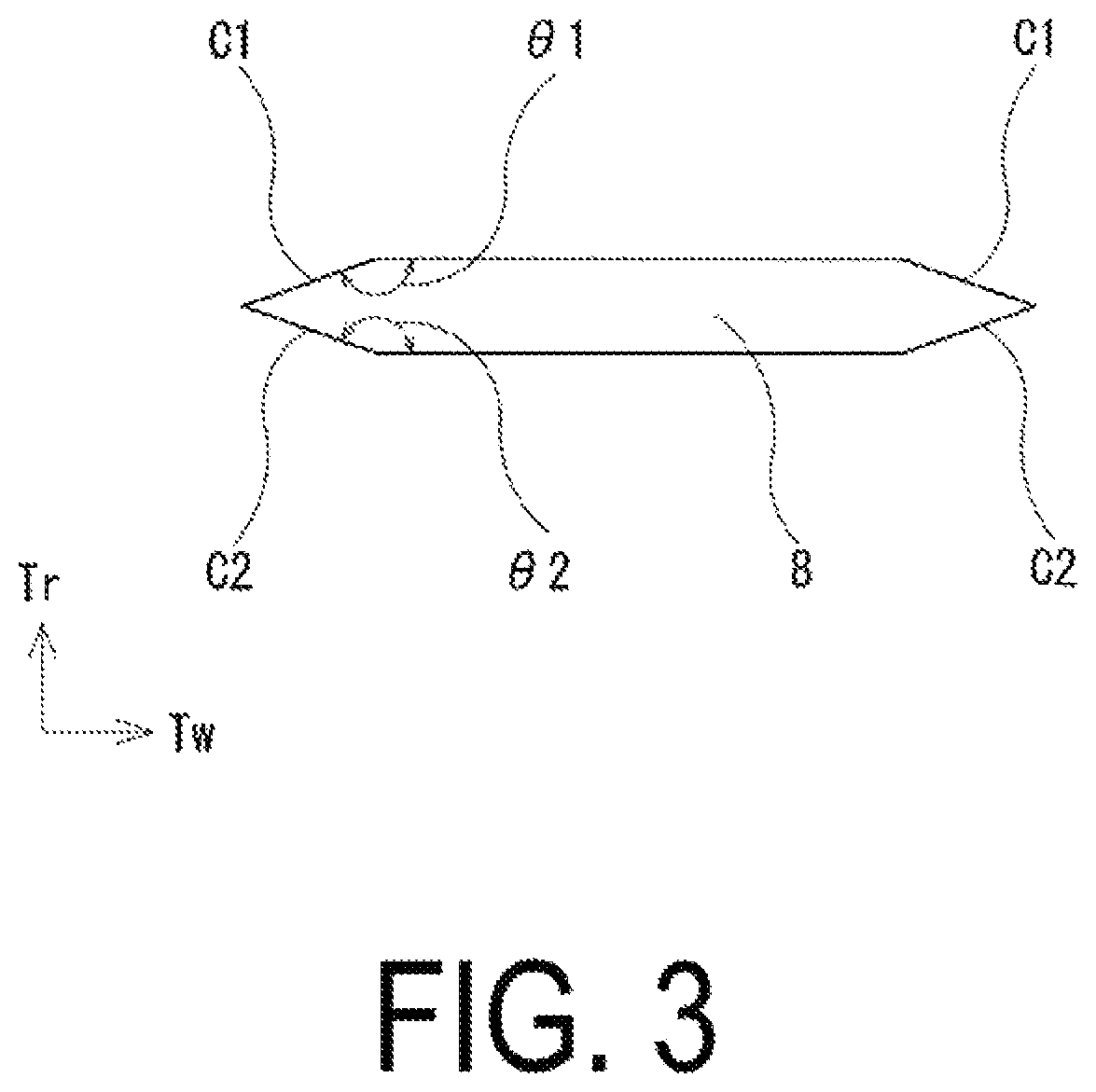Tire noise reduction device and pneumatic tire provided with same
a technology of noise reduction device and pneumatic tire, which is applied in the direction of instruments, transportation and packaging, synthetic resin layered products, etc., can solve the problems of noise generation, sound absorbing member warpage, and breakage so as to reduce noise generation, reduce noise generation, and improve the durability of sound absorbing member with respect to the friction of the band member
- Summary
- Abstract
- Description
- Claims
- Application Information
AI Technical Summary
Benefits of technology
Problems solved by technology
Method used
Image
Examples
examples
[0034]In a tire noise reduction device provided with a sound absorbing member made of a porous material and a band member provided for attaching the sound absorbing member to a tire inner surface and disposed between the sound absorbing member and the tire inner surface, Comparative Examples 1 to 4 and Examples 1 to 5 of noise reduction devices, in which chamfered portions formed as flat surfaces were formed in the band member, were manufactured, the chamfered portions of the band member having various different configurations. Further, Conventional Example 1 was prepared as a known noise reduction device in which the chamfered portions were not provided in the band member. These noise reduction devices are suitable for a pneumatic tire of a tire size of 245 / 50R18.
[0035]In Comparative Examples 1 to 4 and Examples 1 to 5, the presence of the chamfered portions, positions of the chamfered portions (in the width direction of the band member), positions of the chamfered portions (in the...
PUM
| Property | Measurement | Unit |
|---|---|---|
| angles θ1 | aaaaa | aaaaa |
| angle | aaaaa | aaaaa |
| angles θ1 | aaaaa | aaaaa |
Abstract
Description
Claims
Application Information
 Login to View More
Login to View More - R&D
- Intellectual Property
- Life Sciences
- Materials
- Tech Scout
- Unparalleled Data Quality
- Higher Quality Content
- 60% Fewer Hallucinations
Browse by: Latest US Patents, China's latest patents, Technical Efficacy Thesaurus, Application Domain, Technology Topic, Popular Technical Reports.
© 2025 PatSnap. All rights reserved.Legal|Privacy policy|Modern Slavery Act Transparency Statement|Sitemap|About US| Contact US: help@patsnap.com



